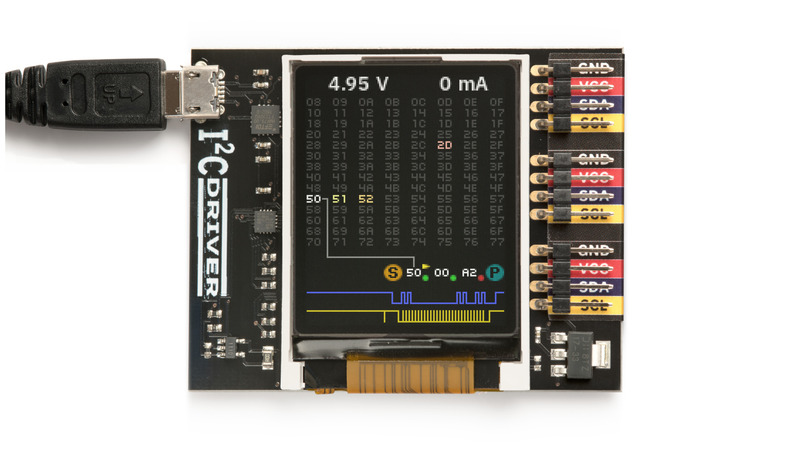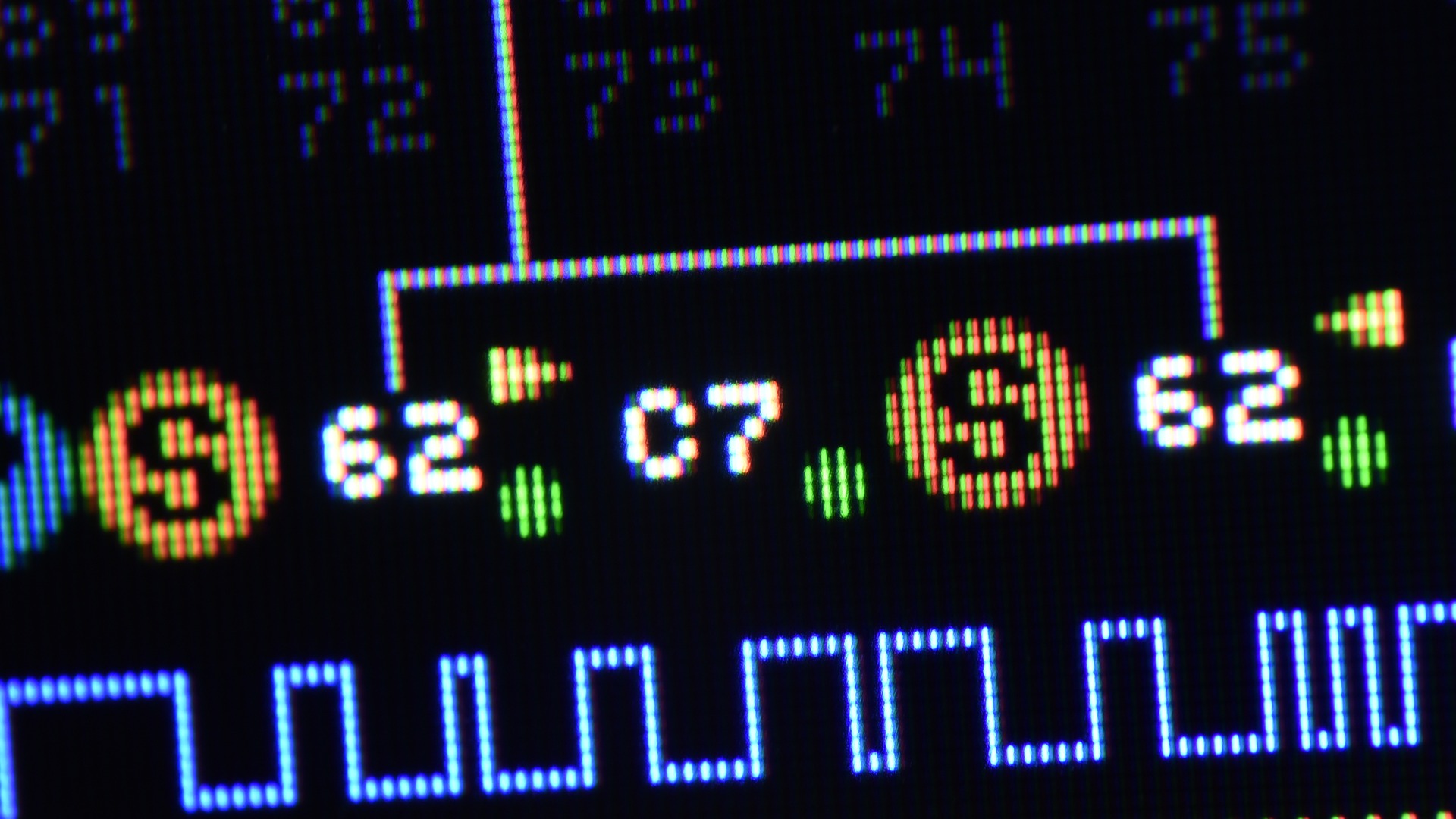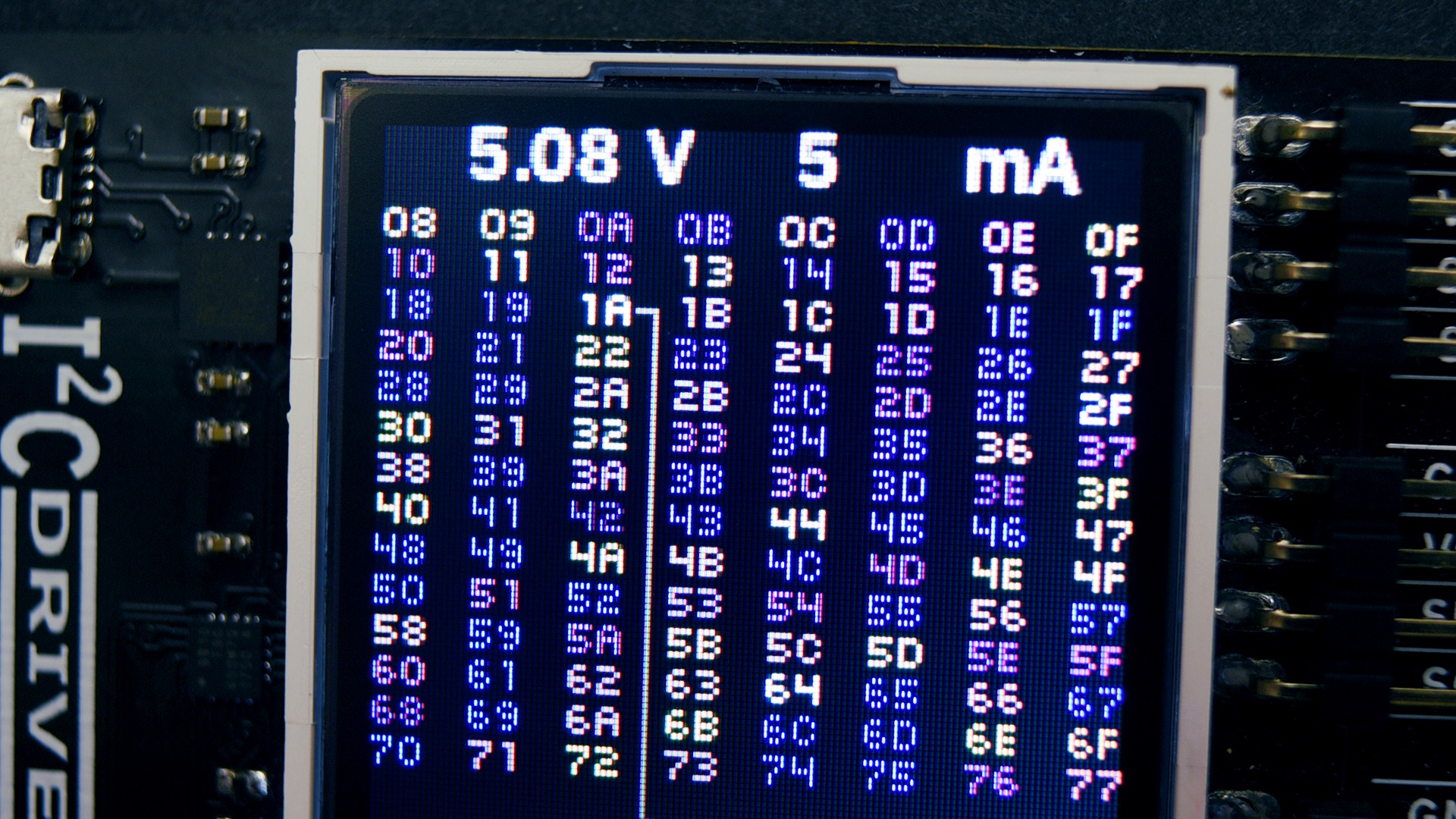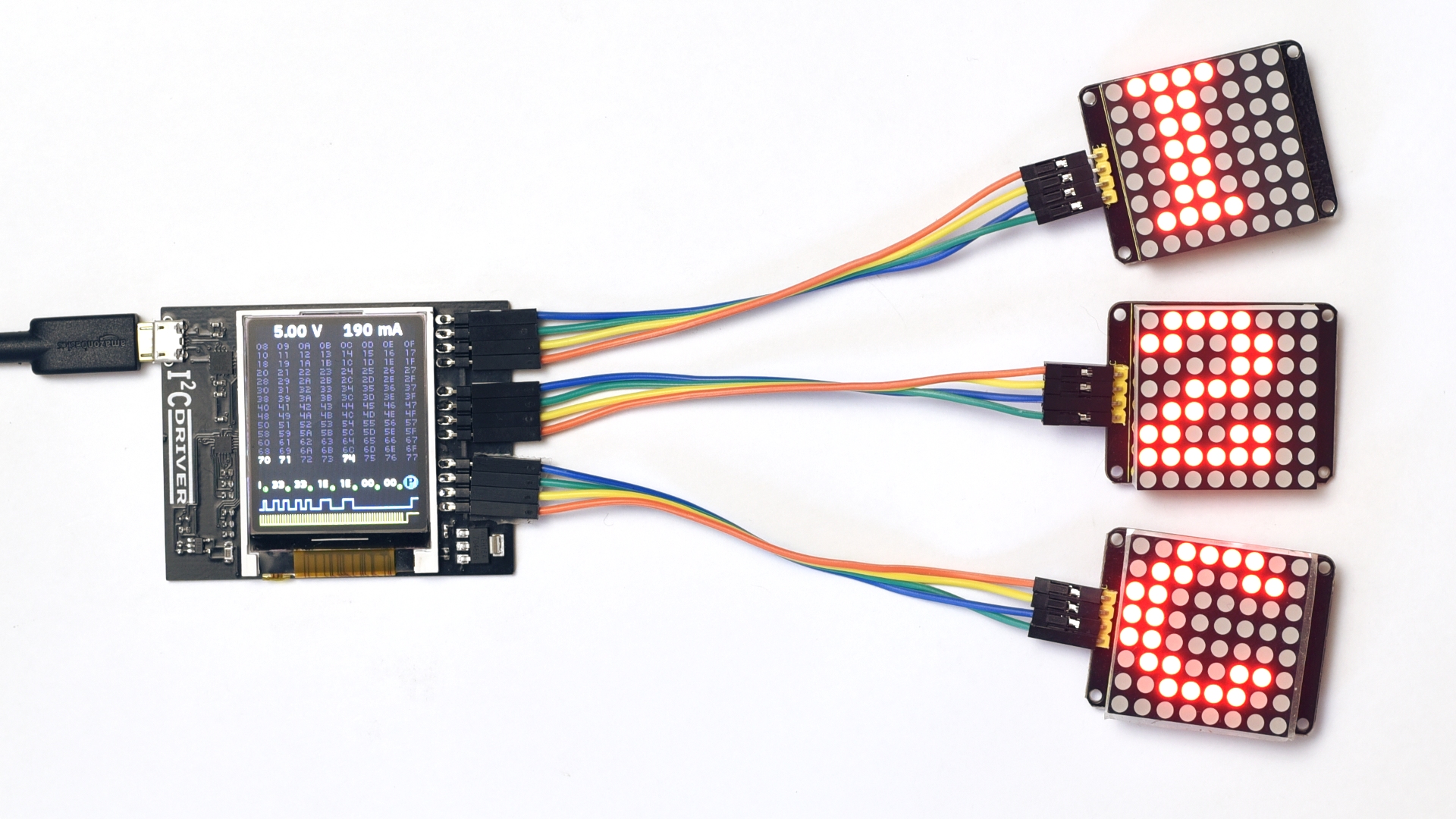
I²CDriver
- Live display: shows you exactly what it's doing all the time
- Fast transfer: sustained I²C transfers at 400 and 100 kHz
- USB voltage monitoring: USB line voltage monitor to detect supply problems, to 0.01 V
- Target power monitoring: target device high-side current measurement, to 5 mA
- I²C pullups: programmable I²C pullup resistors, with automatic tuning
- Three I²C ports: three identical I²C ports, each with power and I²C signals
- Jumpers: three sets of high-quality color coded 100mm jumpers included
- 3.3 V output: output levels are 3.3 V, all are 5 V tolerant
- Supports all I²C features: 7- and 10-bit I²C addressing, clock stretching, bus arbitration
- Sturdy componentry: uses an FTDI USB serial adapter, and Silicon Labs automotive-grade EFM8 controller
- Usage reporting: reports uptime, temperature, and running CRC of all traffic
- Open hardware: the design, firmware and all tools are under BSD license
- Flexible control: GUI, command-line, C/C++, and Python 2/3 host software provided for Windows, Mac, and Linux
Specifications
- Maximum power out current: up to 470 mA
- Device current: up to 25 mA
- Dimensions: 61 mm x 49 mm x 6 mm
- Computer interface: USB 2.0, micro USB connector
All setup and technical information about I²CDriver can be found in the User Guide.
用户指南 Chinese User Guide PDF.
I²CDriver has custom apps for Windows and Mac in their respective stores:
- Install the Windows app
- Install the Mac App
Python is supported for all platfoms. Install the driver from Python with:
pip install i2cdriver
The documentation is on readthedocs.
Run the open-source GUI as i2cgui.py.
All design files and firmware are in the I²CDriver open source repository.
For technical support email support@i2cdriver.com
I²CDriver is an easy-to-use, open source tool for controlling I²C devices over USB. It works with Windows, Mac, and Linux, and has a built-in color screen that shows a live "dashboard" of all the I²C activity.
- USB to I²C interface with a built-in graphical display
- I²C master, passive monitor and capture-to-PC supported at 400 kHz
- Three I²C ports, each with high-quality color coded hookup jumpers
- Power monitoring: USB line voltage and target current readouts
- Flexible control: GUI, command-line, C/C++, and Python 2/3 host software provided for Windows, Mac, and Linux
- Custom app: complete GUI apps provided for Windows and Mac users
I²C is Everywhere
It’s in every phone, in your embedded electronics, in every microcontroller, Raspberry Pi, and PC motherboard. It’s a mature technology - still going strong after 36 years. Because it's everywhere, I²C is used by everyone from novices to embedded designers. But the common element of everyone's I²C experience is struggle. Instead of being easy, I²C very often feels really difficult. Because there are so many ways for I²C to go wrong, things rarely "just work" and instead involve some painful debugging.I²CDriver Makes I²C Much More Friendly
While other I²C tools might offer a couple of LEDs, I²CDriver has a clear logic-analyzer display of the signal lines plus a graphical decoding of the I²C traffic.

In addition, it continuously displays an address map of all attached I²C devices, so as you connect a device, it lights up on the map. You'll never have to ask "is this thing even switched on?" again.

The current and voltage monitoring let you catch electrical problems early. The included color-coded wires make hookup a cinch; no pinout diagram is required. It includes a separate 3.3 V supply for your devices, a high-side current meter, and programmable pullup resistors for both I²C lines.
There are three I²C ports, so you can hook up multiple devices without any fuss.
I²CDriver comes with free (as in freedom) software to control it from:
- a GUI
- the command-line
- C and C++ using a single source file
- Python 2 and 3, using a module
Do More With I²CDriver

By controlling I²C hardware using the PC tools you're most comfortable with, you can get devices doing what you want in a fraction of the development time. Calibrating devices like accelerometers, magnetometers, and gyroscopes is much simpler and faster when done directly on the PC through I²CDriver.
I²CDriver ships with Python examples using small groups of I²C devices to make something useful.
Watch the Whole Network
As well a a live decode of the traffic, the built in display shows a heatmap of all active network nodes. So in an I²C network with multiple devices, you can see at a glance which ones are the most active.
See what I²C is Doing Instantly
When an I²CDriver is connected to an existing I²C bus, it can "snoop" the traffic and display it on the screen. This provides an excellent tool for debugging I²C issues, because you can listen in on the conversation as it happens.
Capture I²C Traffic to Your PC
I²CDriver can dump all I²C traffic back to the PC. I²CDriver's capture mode reliably records every bit to an exhaustive time-stamped log. This is really helpful for debug, analysis, and reverse-engineering. Supported formats include text, CSV, and VCD.
